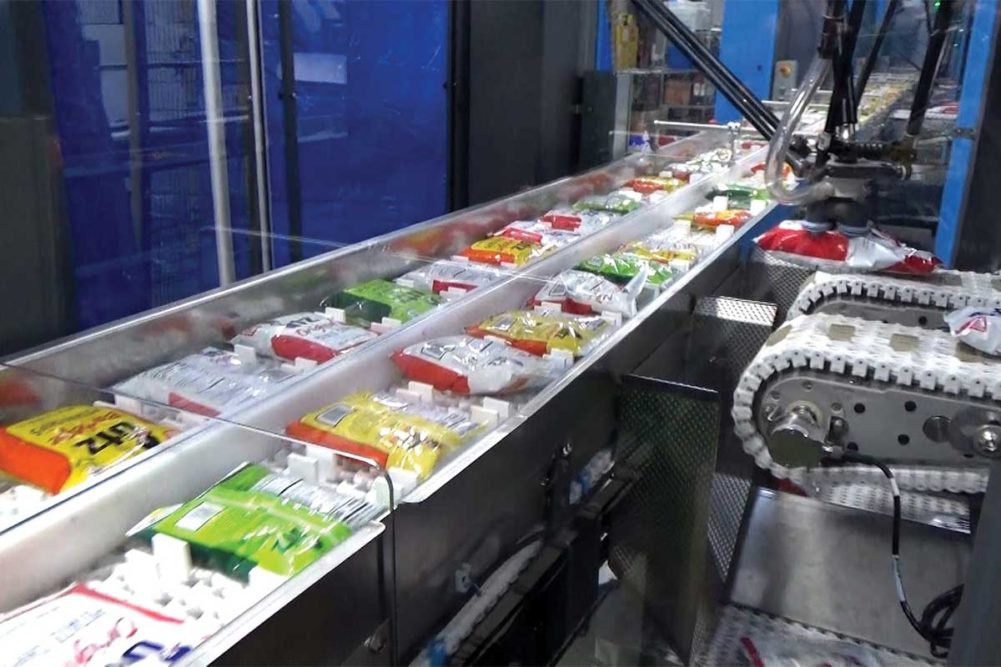Almost everyone who attended Pack Expo seemed to have an issue with their operations or a situation that needed straightening out. At least, this was the message from the exhibitors at the nation’s largest packaging trade show held recently in Chicago.
Throughout the 1.2 million square feet of exhibit space, packaging suppliers focused not only on showcasing the latest in technology, but also on problem-solving alternatives for bakers and snack makers.
Certainly, consumer packaged goods (CPG) companies face a litany of operational challenges at a time when many of them see ample opportunities for expanding their businesses.
The combination of changes in consumer behavior, workforce challenges, requests for new packaging formats and the often-frustrating need for greater capacity has driven a record 40% increase in sales of packaging between 2019 and 2022, according to just-released research by PMMI, the association for packaging and processing technologies and sponsor of Pack Expo.
PMMI also stated that sales are projected to remain above average for the next few years before stabilizing around a 4% growth rate.
Moreover, two-thirds of CPGs have increased their spending on automation in the past three years while almost none have reduced it, noted PMMI’s 2022 report on “The Future of Automation of Packaging and Processing.”
Jorge Izquierdo, vice president, market development, PMMI, pointed out that COVID-19 and the associated health concerns initially fueled primary packaging demand as consumer made most of their meals at home and relied on supermarkets sales of packaged food to get all the ingredients.
Then as these issues abated, the labor shortage hit with a vengeance, and CPGs flocked to buy case packing and other forms of automation to alleviate labor-intensive secondary packaging and end of the line processes.
“The situation went from ‘Let’s push more product out of the door’ to ‘Let’s do the same but with fewer people,’ ” he explained. “We thought this aggressive growth would come to an end, and it did not. We just changed the drivers that are causing this growth.”
It’s not just about the shortage of workers, but also about skill levels. As a result, PMMI’s automation study shows that 97% of CPGs would like to see more enhanced training from machine builders.
“Believe me, nobody wants to replace any people,” Mr. Izquierdo said. “They want to hold on to the people they already have. Some of the challenges they are facing are about retention and how to deal with new people they are hiring. They’re looking at how to use more intuitive automation to speed up their training and make that training shorter; how to empower operators by making help available through remote access that’s quicker and faster; and how you can help an operator oversee the operation of two or maybe three lines.”
For wholesale bakeries, the packaging room is the most labor-intensive area. That’s why innovation has focused on automation without complication.
Or to put it bluntly, make it simple for everyone so that even the rookies in the bakery or snack operation can start up and operate a packaging line.
“In a context of labor shortages with a less experienced workforce, we need to transition toward not only automated slicing, wrapping and handling but also to automated setup,” said Martin Dalbec, product group leader, AMF PackTech, an AMF Bakery Systems brand. “This will allow operations to perform faster product changeovers and not rely solely on operator experience to act quickly.”
Many companies have standardized digital controls by color-coding functions, using recipe-driven menus and replacing words with universally recognized symbols, noted Jason Hogue, southeast sales manager, BluePrint Automation.
“If your user interface is more app-looking like an iPhone that everyone knows how to use, then it really simplifies the operation,” he said. “It’s more about mimicking what people use every day than having a complex HMI that only an engineer can use.”
Jeff Almond, industry manager, snack food packaging for Heat and Control, said the emphasis has been on eliminating the number of decisions an operator needs to make.
“By doing that, we’ve enabled snack manufacturers to require fewer people to operate additional lines, and they don’t have to make as many decisions as they have done in the past with the ones they have to operate,” he said. “We know there’s a lot of turnover in labor, and once you train somebody, they may leave. That’s why we’re making the equipment simpler to operate and giving them the ability to run two or more machines to help companies justify the automation by reducing their labor count.”
Specifically, Heat and Control reduced the number of parameters and baselined many of the decisions required to run baggers, case packers and other systems efficiently
Maintenance techs, Mr. Almond added, still have access to more detailed data if they need to troubleshoot or provide routine upkeep on equipment.
“We want operators to select the speed, make sure they have the right film on the roll, pick a couple other parameters and push ‘start’ and take off,” he said. “Before, they had to make 20 decisions. They now only have to make four or five.”
When it comes to packaging innovation, bells and whistles are music to engineers’ ears, but too many of them just create a lot of noise and confusion for baking and snack producers.
With the labor shortage and the need for greater capacity, keeping it simple is the smartest way to solve problems and drive efficiency in the long run.
This article is an excerpt from the December 2022 issue of Baking & Snack. To read the entire feature on Packaging Innovations, click here.




